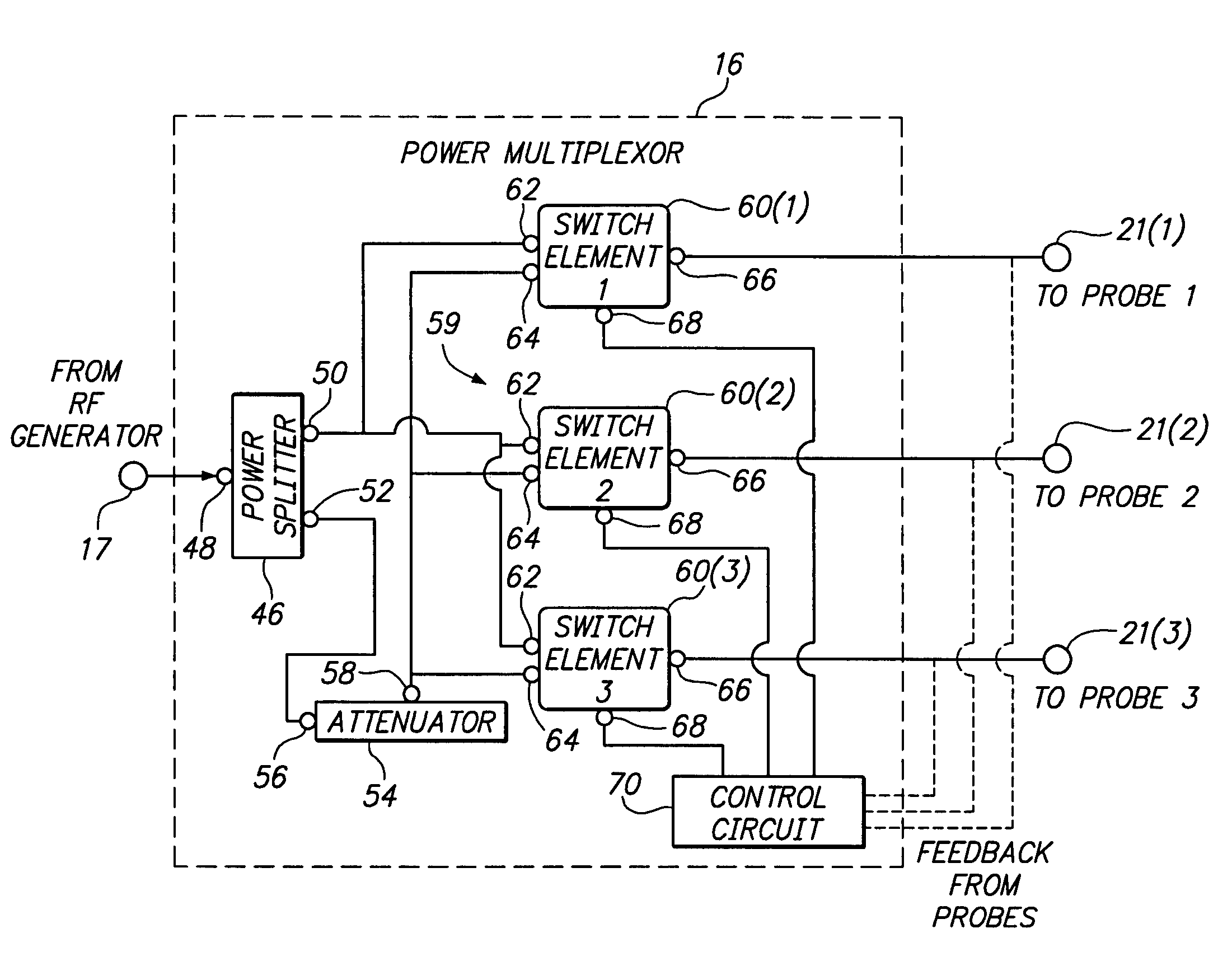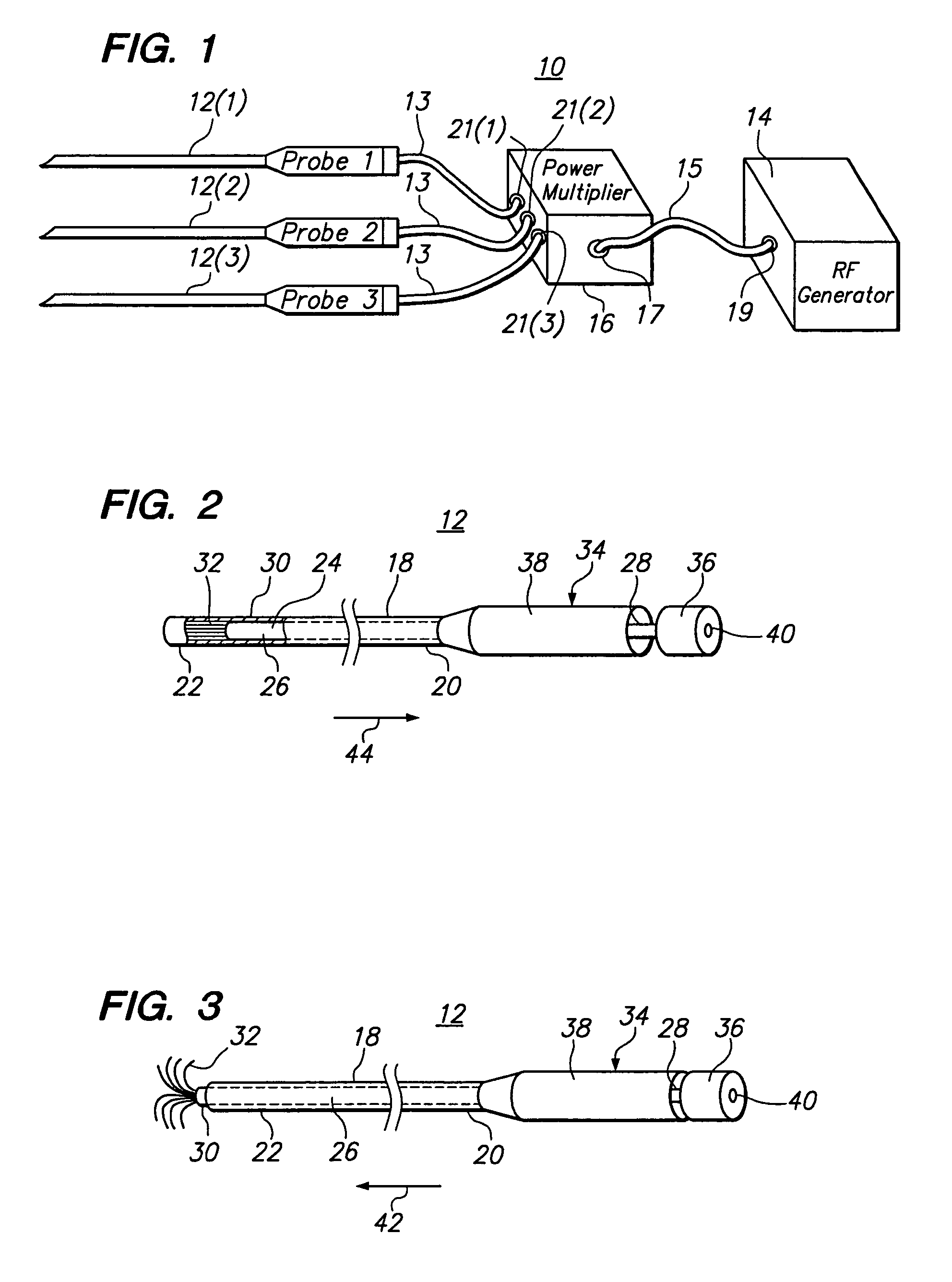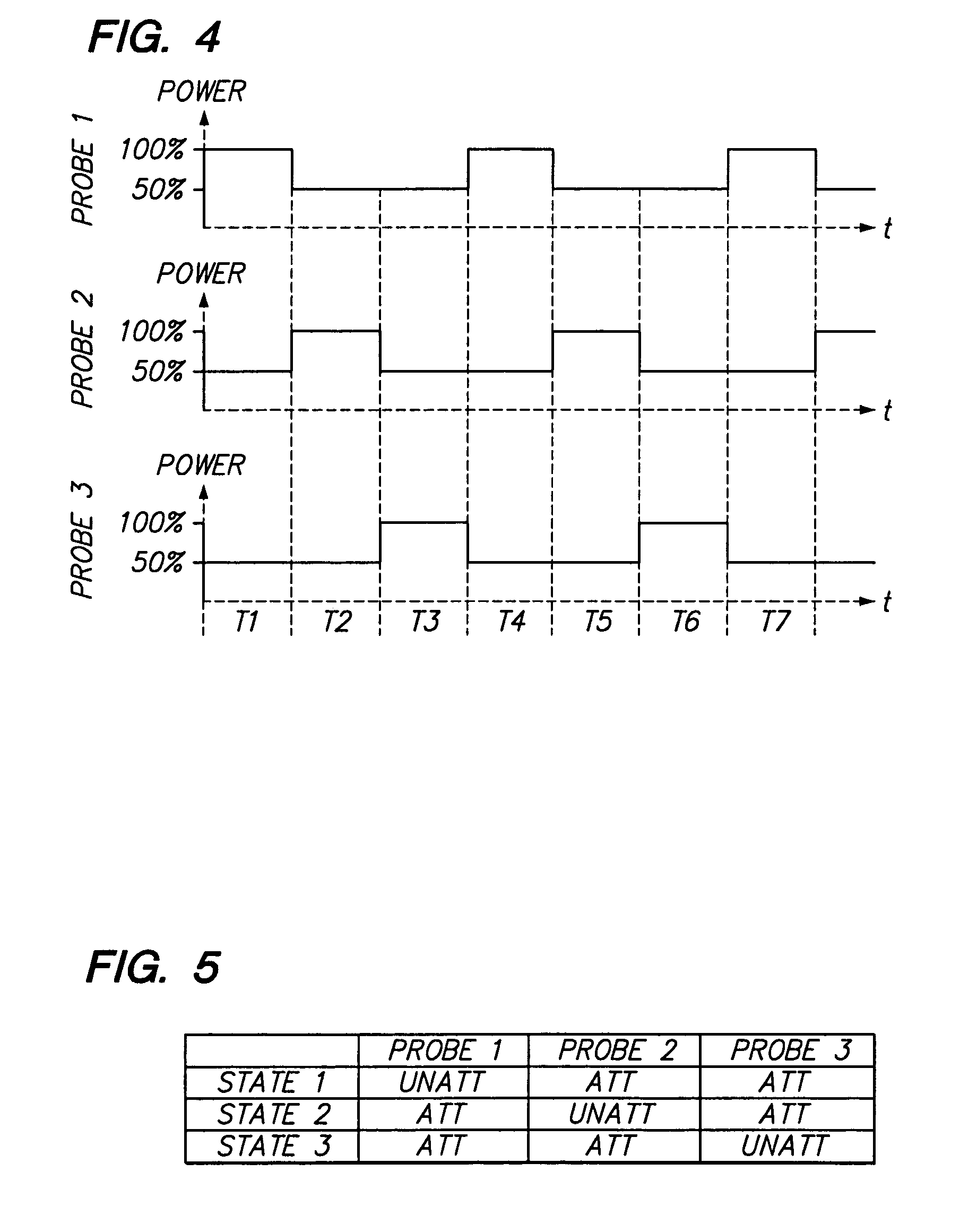Apparatus for switching nominal and attenuated power between ablation probes
a technology of attenuating power and apparatus, applied in the field of electrosurgical apparatus, can solve the problems of large size of tissue coagulation created from a single electrode, and to a lesser extent a multiple electrode array, and difficulty in accurately performing process, and achieves the effect of reducing the number of procedures
- Summary
- Abstract
- Description
- Claims
- Application Information
AI Technical Summary
Benefits of technology
Problems solved by technology
Method used
Image
Examples
Embodiment Construction
[0042]Referring generally to FIG. 1, a tissue ablation system 10 constructed in accordance with one embodiment of the present inventions will be described. The tissue ablation system 10 generally includes a plurality of tissue ablation probes 12 (in this case, three probes 12(1)-(3)) for introduction into the body of a patient for ablative treatment of target tissue, a radio frequency (RF) generator 14 configured for generating RF power, and a power multiplexor 16 configured for receiving the RF power from the RF generator via a standard RF cable 15 and selectively providing the RF power to the ablation probes 12 via standard RF cables 13 in accordance with a particular pattern, such that each ablation probe 12 is always “on” during a tissue ablation procedure—albeit at a power level that may be substantially below the power level of the RF generator 14.
[0043]Referring specifically now to FIGS. 2 and 3, each probe 12 includes an elongate cannula 18 having a proximal end 20, a distal...
PUM
 Login to View More
Login to View More Abstract
Description
Claims
Application Information
 Login to View More
Login to View More - R&D
- Intellectual Property
- Life Sciences
- Materials
- Tech Scout
- Unparalleled Data Quality
- Higher Quality Content
- 60% Fewer Hallucinations
Browse by: Latest US Patents, China's latest patents, Technical Efficacy Thesaurus, Application Domain, Technology Topic, Popular Technical Reports.
© 2025 PatSnap. All rights reserved.Legal|Privacy policy|Modern Slavery Act Transparency Statement|Sitemap|About US| Contact US: help@patsnap.com



